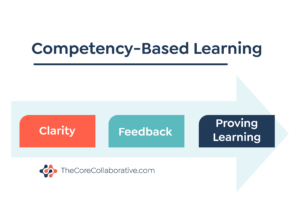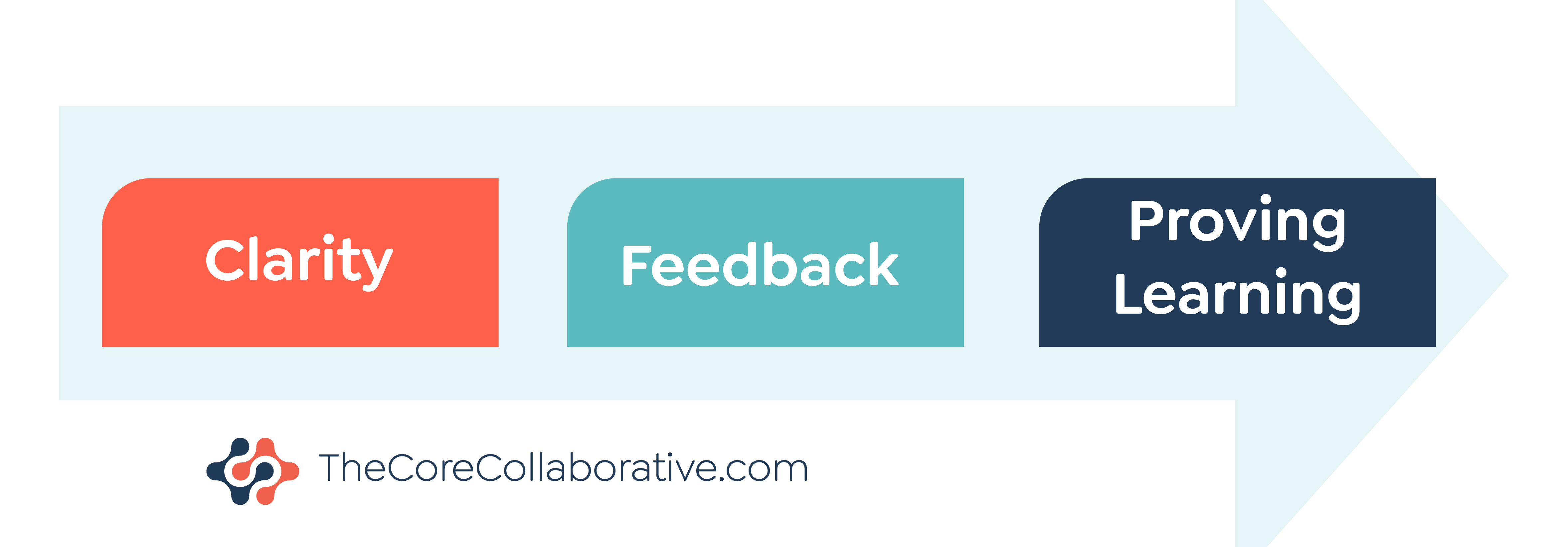Over and over again we hear that students are more disengaged in learning than ever at school. Why? The after effects of the pandemic, the amount of standards teachers are required to cover, the lack of connectedness to school…the list could go on. However, it’s not necessarily helpful to focus on the past issues, as that doesn’t offer much promise for the future.
So, what do we do? How do we engage learners and shift the paradigm?
Let’s first talk about what authentic learner engagement is and isn’t.
It is:
- Learners who have clarity of expectations and a personal connection to learning.
- Students who set and get goals that matter to them.
- Providing voice and choice within social and collaborative learning opportunities
- Students being metacognitive and proving their learning
It is NOT:
- About using extrinsic motivators
- Asking teachers to be more entertaining
- Moving standards around, rearranging them once again
How can We Accelerate Learning and Change the Paradigm?
No matter what you do to figure out ways to engage learners in your classrooms or schools, three essential practices are foundational to the work:
- Clarity
- Feedback
- Proving Learning

Start with Clarity.
Clarity might not seem like the starting place; it’s not flashy or revolutionary, but it is powerful and proven (Titsworth, Mazer, Goodboy, Bolkan, & Myers, 2015). It establishes the conditions ripe for engagement because it decreases students’ anxiety and increases their will to learn. In addition, when students and teachers have established a shared understanding of what success looks like, it opens up a world of possibility for students to flex their agency muscles, which promotes engagement. With clarity, learners are able to reflect on their current strengths and next steps for learning, set personalized goals, make a plan, select strategies, try and try again, make adjustments, get feedback, and reflect on their learning (Ambrose, Bridges, Lovett, DiPietro, Norman, 2010).
Take Action:
Less is more:
- Dig in and learn about clarity that impacts learning
- Develop student-friendly learning goals and success criteria
- Learning Goals: Move from covering standards to a focus on 3-5 concepts/competencies that represent the essential big ideas for the grade or course.
- Success Criteria and Progressions of Learning: Provide a pathway of learning for students that includes pre-requisites, grade level expectations, and possibilities for going beyond grade level.
- Co-construct what success looks like: Engage students in evaluating exemplars, examples, and work-in-progress to determine what quality work looks like.
Research is clear on clarity–meaningful learning starts with clarity. Once the clarity components are in place, the next focus is feedback.
Feedback Must Promote Revision
Because this article is about what engages learners and accelerates learning, feedback in this case isn’t just a good idea but becomes a necessary and welcomed part of the learning process for students and teachers. In other words, feedback is aligned to the learning expectations and focused on progress toward the next step in learning.
It is:
- Regular conversations that move learning deeper and enable students to take their next steps in learning.
- Rooted in showing not telling, meaning students have access to examples, exemplars, and works in progress and engage in discussions about what makes quality work.
- Promotes revision rather than completion.
It is NOT the kind of feedback that:
- Involves hours of work on the part of the teacher, writing comments; rather, it’s the kind of feedback that requires the students to address their current learning gap.
- Provides loads of changes to student work; rather, it’s the kind of feedback that honors progress and enables students to determine a next step in learning.
- Comes too little, too late; rather, it’s the kind of feedback that is just for me as a learner and just in time.
Take Action:
- Show students what successful feedback conversations look like, feel like, and sound like. Then provide time for practice and feedback about the conversations themselves.
- Collect, discuss, and share examples and exemplars to guide revision based on feedback. Slow down and take time during the learning to discuss how learners are making progress in their work and what they can do to continue to improve it.
- Create a process where learners have time to make changes and level-up their work.
- Provide reflection tools aligned to the learning expectations that help students literally see their progress.
When students start to have small wins on a regular basis, their desire for learning and more success increases. As student progress accelerates, an opportunity exists to build student self-efficacy by proving their learning through a body of evidence.
Proving Learning Prioritizes Evidence Over Grades
Nothing is more powerful in building efficacy and engagement than experiencing mastery moments, each representing a small victory – a win (Vandas, Westfall, & Duvall, 2023). These small moments are what winning streaks are made of: When students start to have mastery moments on a regular basis, where they are experiencing success, no matter how small, they experience a boost in motivation that propels them forward.
Thinking and doing at this point can and does shift from getting the grade to proving learning through a body of evidence. Students are able to gather their work, self-assess their progress and match their best evidence to the expectations for learning. When teachers take time to allow students to be metacognitive about their progress, they elevate the idea of progress over achievement, celebrate growth, and provide students the opportunity to see their winning streak before their eyes.
Take Action:
- Regularly ask students to select their best evidence of learning and explain why they selected the work they did aligned to the learning expectations. Next, ask them to determine their next steps and make a plan.
- Create options for learners to demonstrate their learning beyond just the traditional quizzes or tests. Determine what evidence sources would be acceptable to the teacher and then communicate what students must do and what they may do to prove their learning.
Let’s Wrap Up
To impact authentic engagement, we have to engage differently. Clarity of learning expectations, ongoing feedback conversations, and students thinking through how to prove their learning with a body of evidence are not all of the practices we need to foster greater engagement, but they are foundational, essential, and powerful.
References:
Ambrose, Bridges, Lovett, DiPietro, & Norman (2010). How learning works: 7 research-based
principles for smart teaching. Jossey-Bass.
Titsworth, Mazer, Goodboy, Bolkan, & Myers (2015). Communication Education: Two
meta-analyses exploring the relationship between teacher clarity and student learning.
Routledge. 01, July, 2015.
Vandas, Westfall, & Duvall (2023). Learner agency: A field guide for taking flight. Mimi & Todd
Press.



